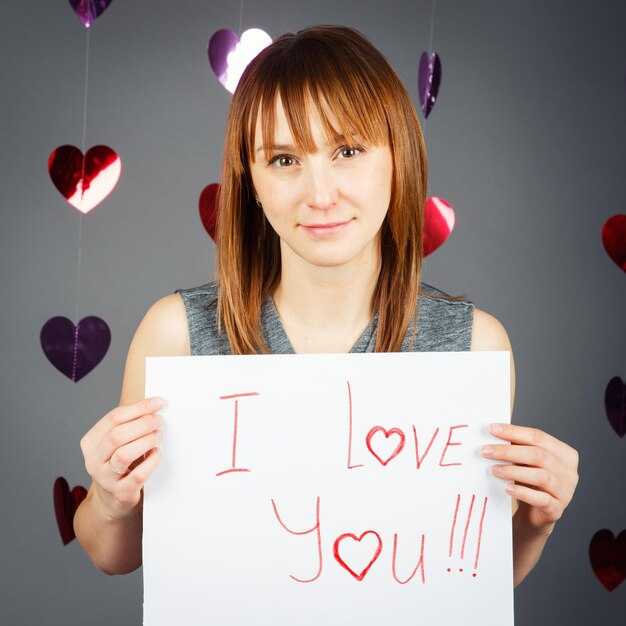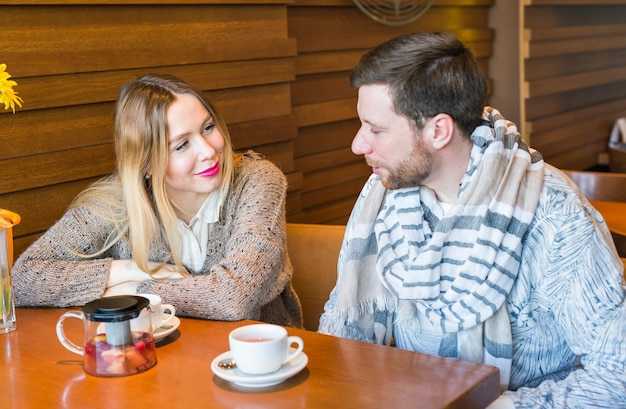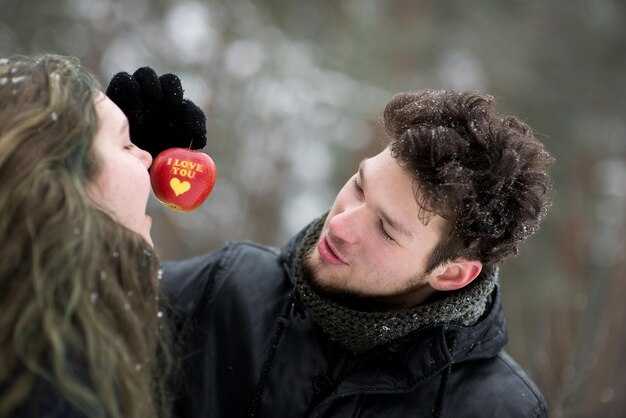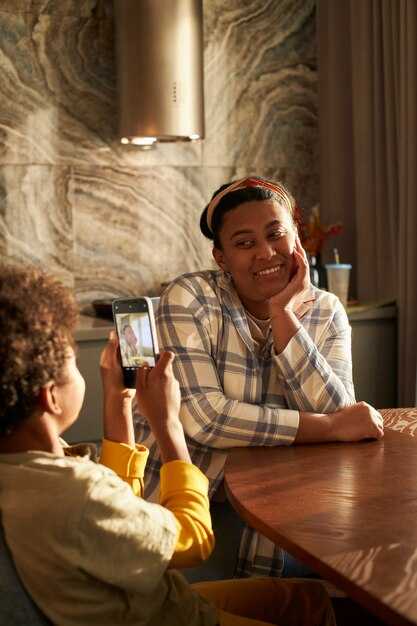Reserve two fixed evenings weekly for undistracted presence: simply prioritize steady routines over sporadic grand gestures and use one session to talk about life plans, bills and short-term choices so practical needs get addressed.
Count micro-actions: hold the door, make morning coffee, send a timely check-in–aim for five deliberate actions per pair each week; across pairs this pattern improves perceived support because something small, consistently executed, accumulates into measurable stability, so remember dates and routines rather than relying on single declarations.
Track emotional signals quantitatively: mark laughs, shared silences and help with chores on a simple checklist to understand the whole pattern; the general concept is that steady, practical choices mean presence – this means support. Not every gesture is meant to be poetic; sometimes nothing flashy is needed, and finding those reliable behaviors helps both partners feel secure and understand each other’s priorities.
15 Ways Guys Say “I Love You” Without Saying a Word – 15 subtle signs he loves you without saying it and what to do if it seems like he doesn’t

1. Start with one concrete ask: request a clear conversation in seven days that lists three specific behaviors that would change current signals; if nothing changes, set a boundary and follow through here and after that deadline.
2. Someone who rearranges their schedule to be present regularly indicates priority; track how often they land plans around shared time and whether those changes are sustained or occasional.
3. Attention to small details – remembering letters, dates and a previous comment – shows active listening; document examples over a month to build understanding of intent.
4. Physical proximity matters: if they stand close, toes pointing toward the partner and offer warm touches, that physical closeness represented in posture is a measurable sign; note frequency and context.
5. Protective actions that are not performative – walking on the street side, offering a jacket, calling to check in after a late shift – indicate practical care and realignment of priorities.
6. Introducing to older family or friends and letting relationships land naturally is a strong indicator of long-term interest; ask about timing and reasons for introductions if unclear.
7. Future planning that includes shared course decisions – vacations, leases, goals – reveals commitment; catalog concrete plans made at least three months ahead as evidence.
8. Genuine vulnerability appears as sharing fears, admitting mistakes and asking for help; observe whether theyre consistent in opening up or only do so under stress.
9. Mirroring behavior is a natural nonverbal concept: matching tone, pace and gestures often shows alignment in personality and comfort; point it out in a calm conversation to gauge reaction.
10. Different supportive signals include problem-solving for practical reasons, swapping workload, or helping with career work; measure balance over several weeks to avoid mistaking occasional effort for pattern.
11. Quick responses to a call or urgent message, and checking in after a difficult day, indicates prioritization; create a baseline for what response times feel acceptable and communicate it.
12. Emotional safety is obvious when the person allows vulnerability without judgment; if they withdraw when things get raw, ask direct questions about capacity to engage vulnerably.
13. Playful teasing and affectionate gestures often show up as small rituals – a nicknamed greeting, folded notes or shared private jokes – which represent an intimate language; note examples and discuss meaning together.
14. If there are mixed signals going one way and back the other since the relationship began, list specific incidents before raising the topic and request clarification on the angle behind decisions.
15. If actionable signs remain absent, present three non-negotiables, set a realistic timeline and seek outside support; there are infinite next steps, but choosing one decisive path preserves self-respect and invites greater understanding of the other person’s true priorities.
Touch and proximity cues that silently mean “I love you”
Begin by initiating a single, deliberate wrist-hold during transitions: 3–7 seconds each time and at a consistent time in the outing establishes a clear physical signal.
Use paired cues rather than isolated gestures – a brief hand-hold followed by steady regard for 2–4 seconds creates a reliable point of connection; these pairs work best when repeated in a sequence across several meetings so the pattern registers as intentional, not accidental.
Adopt simple formulas for intensity: light contact (2–3s) for everyday warmth, longer contact (10–20s) for intimate moments. Track the ratio of touch to eye contact as 1:3 (touch one unit, look three units) to avoid overwhelming someone while still showing clear affection.
Place small rituals around calendar anchors: a gentle forehead touch on a birthday morning, a palm-on-back when saying farewell, or two fingers brushing hair when sitting close – these timed acts create memory anchors that accumulate regard over time.
Prefer forward-facing proximity: move slightly forward to close 10–30 cm of distance during conversation, then retreat to give personal space. Movement toward then around a partner signals intentional closeness; a hug from behind while both are standing conveys protective warmth without words.
Reserve bolder signals for certain contexts: placing a hand on the small of someone’s back when navigating crowds or framing a face with both hands before a kiss – these shapes and positions require courage and are best used when rapport is already natural.
Leave tangible cues: short handwritten letters tucked into a jacket, a sequence of three short notes over a week, or a saved pair of seats at an event. Physical letters function as low-risk demonstrations of true regard that someone can revisit.
Observe responsiveness and adjust formulas: whenever a touch might cause withdrawal, shorten duration and increase frequency; conversely, when touch elicits return contact, extend duration and move forward in intimacy. This feedback-driven approach reduces misread signals.
Combine touch with shared tasks for subconscious bonding: guiding a hand while cooking, steadying during a stair descent, or pairing a supportive arm during an emotional conversation. These task-linked touches form a practical sequence that feels natural rather than staged.
| Cue | Action | Timing / Ratio | Intended effect |
|---|---|---|---|
| Wrist hold | Brief grasp while walking | 3–7s; repeat every 8–12 minutes | Steady connection, approachable intimacy |
| Forehead touch | Light press while standing close | 1–2s; use on special mornings (birthday, milestone) | Warm reassurance, memory anchor |
| Hug from behind | Wrap arms around waist/shoulders | 5–15s; follow with eye contact | Protective comfort, subtle possession |
| Face framing | Hands gently cup cheeks | 2–6s; only with established consent | High intimacy, explicit affection |
| Task touch | Guide hand during cooking or tying | Short, frequent; paired with verbal regard | Practical closeness, cooperative bonding |
| Seat proximity | Sit at an angle, knees or shoulders touching | Maintain for sequence of activities (movie, walk) | Comfortable intimacy, nonverbal companionship |
Measure success by reciprocal behavior: if someone returns touch, increases eye contact, or keeps small tokens, the concept is validated. Preserve consent and adjust pacing; natural progression, not forced formulas, indicates true emotional alignment and genuine regard.
Sustained eye contact in private moments
Hold steady eye contact for 6–12 seconds during an intimate pause to communicate deep affection to a partner; shorter glances can be complemented by a soft smile and verbal minimalism. This article gives precise timings, ratios and follow-up actions.
- Concrete timing: use 6–8 seconds for initial contact, 8–12 seconds when both are relaxed; avoid exceeding ~15 seconds to prevent the feeling of staring isnt intentional.
- Ratio formula: apply a 3:1 contact:avert ratio – e.g., 9s contact then 3s glance away; mathematical formulas like this help standardize practice without making it robotic.
- Cycles per interaction: 2–4 cycles within a single private scene (sitting on a couch, in a room before sleep) is a practical number; more cycles can feel heavy unless both welcome it.
- Distance and angle: keep 1–1.5 meters when seated, 45° head tilt forward slightly to soften intensity; standing face-to-face may require 0.6–1.0 meters depending on comfort.
Specific adjustments:
- If partner returns from work or is tired, shorten contact by 25–40% and increase micro-smiles; whenever fatigue is present, prioritize shorter, warmer looks.
- Older adults often prefer shorter intervals and clearer breaks; adapt the ratio downward (2:1) and check nonverbal feedback.
- Type of moment matters: before sleep or after a confession, extend contact toward the higher end of the range; during a quick check-in, keep it under 6 seconds.
Complementary practices:
- Follow a sustained gaze with a handwritten note or short text – letters amplify the intent and create a tangible keepsake.
- Pair eye contact with light touch on the hand or shoulder to anchor the signal; touch should be brief (1–2 seconds) and placed after the first contact cycle.
- Use verbal minimalism: one or two simple sentences forward the emotional content without breaking the nonverbal rhythm.
Safety and consent checks:
- Watch micro-expressions: pupil dilation, relaxed jaw, and returning gaze indicate reciprocity; repeated avoidance signals stop and ask permission.
- Not necessarily every private moment is appropriate – be sure partner is present mentally, not distracted by screens or work thoughts.
- Dream-like intensity or references to infinity can feel romantic for some but overwhelming for others; tailor the approach to the ones who respond positively.
Practical drills:
- Begin with 4 cycles of 6s contact/2s away while seated; record subjective comfort on a 1–5 scale to track progress.
- Practice in a quiet room with low light to reduce external stimuli; review results after three sessions and increase contact by 1–2 seconds if both score 4–5.
- Use the ratio and simple formulas from this article as a baseline, then adapt to real-time feedback rather than rigidly following numbers.
Lingering hugs that last beyond a greeting

Hold the hug 3–5 seconds past a quick hello; if the other person relaxes, extend to 8 seconds using a Fibonacci test sequence (2, 3, 5, 8) to escalate safely. Keep hands low on the mid-back rather than the waist or neck to lower possessive signals and reduce discomfort. Pause before releasing, gauge breathing rate and shoulder tension; fast inhalation or stiff arms means stop immediately.
Match pressure to the other person’s response: a gentle, even pressure that follows their micro-movements signals attraction and comfort, while a push away or quick withdrawal signals nothing mutual. After release, resume normal conversation within 10–20 seconds; a neutral comment or a short question resets tone and helps read intentions. Maybe follow with a compliment tied to personality or shared values rather than physicality–that grounds the contact in relationship context.
Use context-based thresholds: casual acquaintances – keep lingering under 5 seconds; friends with clear consent – 5–8 seconds; long-term partners – 8–15 seconds can feel great and reaffirm bond. marriagecom research and common reports show regular affectionate touch correlates with stronger relationships and higher reported compatibility over the long term. If others in the group look uncomfortable or the person avoids eye contact after, consider that as a primary signal to stop.
Track simple metrics to refine choices: ratio of reciprocated hugs (reciprocation rate), average linger length that felt comfortable, and number of positive conversations following contact. These data points reveal reasons a particular approach works with someone – personality, attraction, shared values – and what would likely be appreciated next time. Here are practical rules: whenever the other person initiates, follow the Fibonacci timing; whenever they break first, respect that immediately; whenever doubt exists, keep it short and steer toward conversation.
Casual, frequent touches while talking
Initiate a light forearm brush or brief shoulder tap every 60–90 seconds while speaking; keep contact under two seconds unless the other returns the gesture, which signals comfort and interest.
Read micro‑signals: theyre leaning in, eyes steady, smile lines and relaxed fingers indicate positive reception; if the other pulls back, looks away or plants feet straight, stop immediately and reset the interaction.
Match touch type to situation: a quick palm graze works in casual settings, fingertip-to-back of hand suits a coffee date, while a short hand-on-knee can signal stronger passion only after verbal rapport begins; dont escalate if reciprocity wont appear.
Starting small creates a measurable pattern: count reciprocated touches across a conversation – three mutual touches across different topics suggests increasing seriousness; zero reciprocation means reassess and avoid repeating the same actions.
When planning longer contact, let the person sees the intent first: rest a hand lightly on the table near their fingers, watch for a reach or pull, then land a longer hold after permission is implied; this prevents awkwardness and respects boundaries.
Use these touches to test alignment: consistent, mutual contact while talking often correlates with shared priorities and dream alignment in how both lives intersect; if touches are one-sided, possibly the emotional interest is shallow rather than deeply mutual.
Choosing to sit or stand physically close in public
Keep a baseline distance of approximately 30–60 cm (1–2 ft) when choosing to sit or stand close in public; reduce or expand that range only after clear positive responses from the other person.
- Context thresholds:
- Dating or intimate contexts: ~30–45 cm if both lean in and mirror posture.
- Casual social settings: 45–60 cm is a safe general range.
- Work or professional settings: maintain ≥60 cm unless a collaborative task requires closer proximity.
- Public transport or crowded places: expect reduced personal space; avoid approaching more than ~20–30 cm unless interaction is brief and consent is obvious.
- Observable cues that closeness is welcome:
- Torso angled straight toward the other person and shoulders relaxed.
- Mirroring of posture or gestures; similar breathing rhythm often occurs.
- Laughs and frequent eye contact – these behaviors indicate comfort, not just politeness.
- Minimal backward step when the other adjusts position; absence of crossed arms or protective movements.
- Signs to increase distance immediately:
- The other person turns away, narrows eyes, or places objects between bodies.
- Verbal cues that indicate discomfort or a request for space.
- Repeated repositioning that results in an increased gap; this often represents a boundary change.
- Quantitative checkpoints for practice:
- Test proximity in low-stakes moments about 3–5 times per meeting to gauge tolerance.
- If tolerance increases, reduce distance by ~10–15 cm increments rather than a single abrupt shift.
- A number of brief trials (approximately 2–4 short interactions) gives a reliable sense of boundaries.
- Factors that alter acceptable distance:
- Age: younger adults were observed to accept closer proximity; tolerance can differ by ~10–20 cm compared with older adults.
- Culture and upbringing shape personal boundaries; avoid assuming similarity across backgrounds.
- Social intelligence affects reading signals – practice improves accuracy in interpreting body language.
- Practical rules to follow:
- When doing a task together, align bodies at an angle rather than facing head-on; this reduces perceived intrusion.
- If unsure, start at the farther end of the recommended range and move closer only when the other matches or leans in.
- Respect a single explicit request for more space immediately; that response often prevents significant discomfort later.
- Allocate time to observe nonverbal feedback for at least 5–10 seconds before adjusting position.
- Why proximity matters:
- Closeness signals intent and increases perceived warmth in brief interactions; the nature of the relationship mediates interpretation.
- Appropriate proximity improves collaboration and rapport in both personal and professional life when applied with sensitivity.
- Misjudged proximity can create awkwardness that seems disproportionate to the initial intent; small adjustments prevent that outcome.
- Final reminder:
Remember that acceptable distance is dynamic: monitor interactions, respect explicit and implicit signals, and favor incremental adjustments rather than sudden moves that may be misrepresented.
Protective positioning in crowded or risky situations
Position chest and shoulder between the other person and perceived threat, stepping forward 10–20 cm so the protector lands on the threat side when contact occurs.
In high-density crowds (≥3 people/m²) angle torso ~45°, stagger feet for stability, keep 0.5–1.0 m buffer on the protected side and shift bag or jacket to create this kind of barrier; be sure to keep the protected person’s field of vision clear so escape routes remain accessible.
Use a flat hand on the lower back or elbow – light pressure, palm open, brief contact – actions that guide rather than seize; avoid gestures that can be misread as attraction, keep facial expression neutral and minimize verbal content.
This isnt performative; its a true micro-skill: practice moving so they really feel shielded while maintaining mobility, and avoid covering vision or increasing vulnerability by wrapping arms across the chest.
When direction change is needed, tap twice on the shoulder as a prearranged signal, speak a short phrase if required, and position the leading foot so both can land toward the chosen exit together; creating predictable signals reduces panic.
For dim or isolated locations, lead toward lit areas or crowds, keep the protected person’s shoulder closer to the protector, and keep hands free to open doors or remove obstacles to reduce time spent exposed.
Teach younger companions simple checks: reduced eye contact, shorter replies, stiffer posture – these signals and reported feelings indicate less comfort and require immediate repositioning or finding an exit.
Accept that protection isnt an infinite guarantee or an infinity shield; treat these tactics as layered risk reduction and measure success by whether vulnerability decreased and whether the protected person felt closer and safer afterward.


 15 Ways Guys Say I Love You Without Saying a Word">
15 Ways Guys Say I Love You Without Saying a Word">

 Donald J Marckini – Biography, Proton Therapy Advocate & Author">
Donald J Marckini – Biography, Proton Therapy Advocate & Author">
 Why Women Need Masculine Energy in Men — Benefits & Reasons">
Why Women Need Masculine Energy in Men — Benefits & Reasons">
 5 Ways to Overcome Dating Burnout — Reignite Your Love Life">
5 Ways to Overcome Dating Burnout — Reignite Your Love Life">
 148 Date Ideas From a Dating Expert — Fun, Unique & Not Boring">
148 Date Ideas From a Dating Expert — Fun, Unique & Not Boring">
 How to Make Others Feel Seen, Heard and Loved – 10 Practical Ways">
How to Make Others Feel Seen, Heard and Loved – 10 Practical Ways">
 Decoding Male Behavior – How Guys Deal with Breakups and Cope">
Decoding Male Behavior – How Guys Deal with Breakups and Cope">
 9 Things to Say When Someone Asks Why Are You Still Single? — Witty, Confident Replies">
9 Things to Say When Someone Asks Why Are You Still Single? — Witty, Confident Replies">
 5 Love Languages – How We Give & Receive Love — Complete Guide">
5 Love Languages – How We Give & Receive Love — Complete Guide">
 Leading Co-Parenting App for More Peaceful Shared Parenting">
Leading Co-Parenting App for More Peaceful Shared Parenting">
 The 4 Phases of Modern Dating – Why They’re More Familiar Than You Think">
The 4 Phases of Modern Dating – Why They’re More Familiar Than You Think">